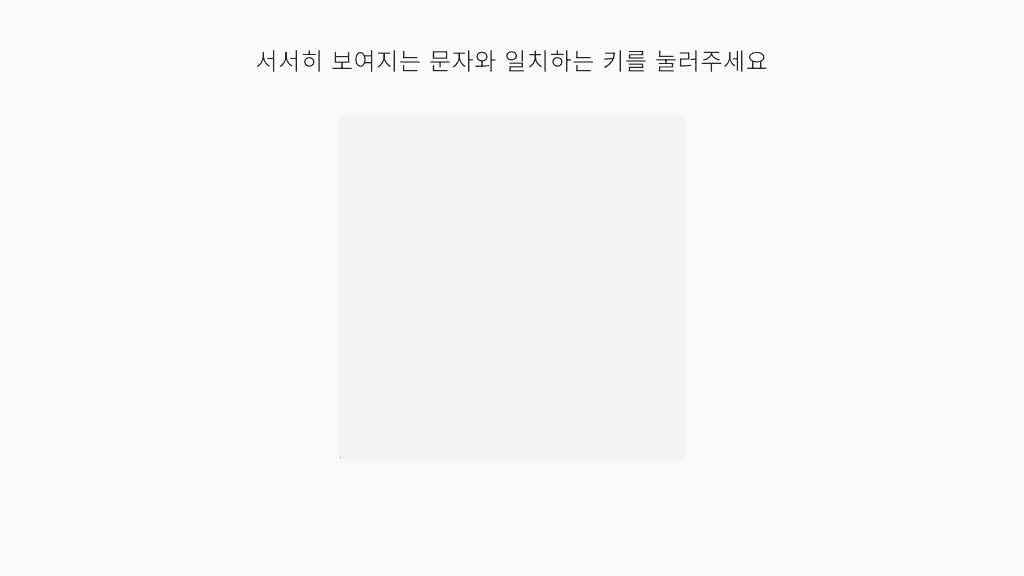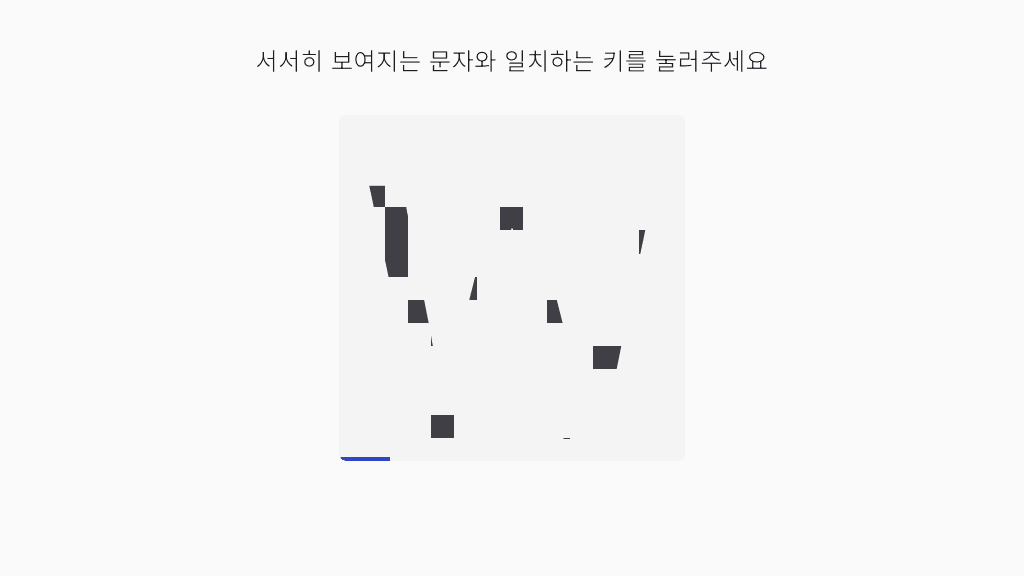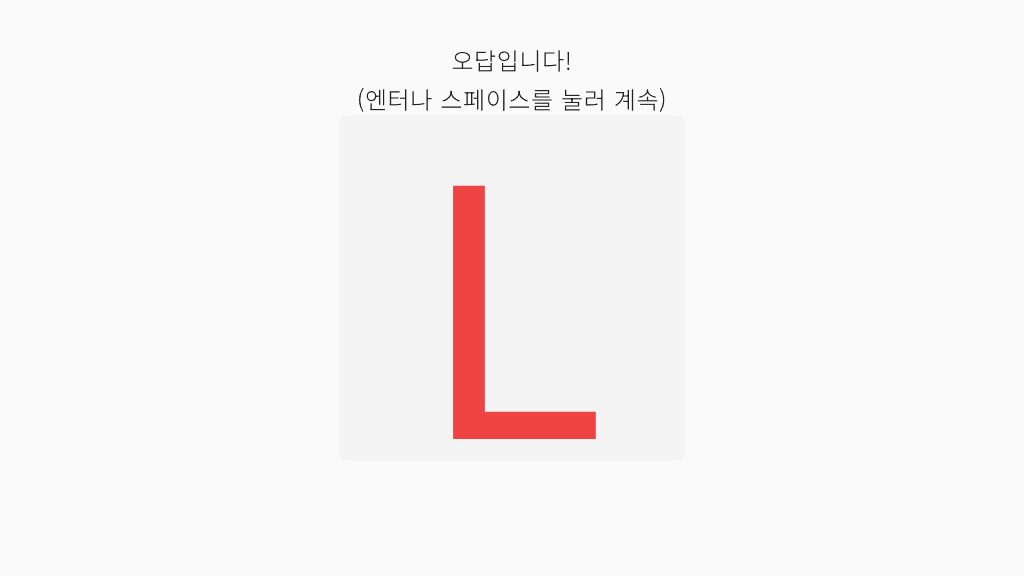Character Guesstimate
Overview
Character Guesstimate training involves partially revealing a letter and identifying it as quickly as possible before it is fully displayed. This training improves shape perception, visual recognition, spatial awareness, information processing speed, and simultaneous processing ability.
Each training attempt follows this sequence and repeats until the allotted training time is exceeded:
- At the start of an attempt, a blank rectangle is displayed, and a letter begins to gradually appear within it.

- Identify the letter as quickly as possible and press the corresponding key. A blue progress bar below the rectangle indicates how much of the letter has been revealed.

- After pressing a key, the full letter is revealed, and the result is compared to your input. Correct answers are highlighted in green, while incorrect answers are shown in red.


Training Settings
Duration (Minutes)
The training ends after the current attempt finishes if the preset training duration is exceeded. The recommended training duration is around 5 minutes, and sessions exceeding 10 minutes are not advised.
Character Type
Sets the type of characters used in the training. Using characters from the trainee's native language is most effective. The available character types are:
- Numbers: Digits from 0 to 9
- Alphabets: Uppercase letters from A to Z
- Alphabets + Numbers: Uppercase letters (A-Z) and numbers (0-9)
- Korean: Korean consonants (e.g., ㄱ, ㄴ, ㄷ) and vowels (e.g., ㅏ, ㅑ, ㅓ)
To lower the difficulty, select simpler character types (e.g., from Alphabets + Numbers to Alphabets or Numbers).
To increase the difficulty, select more complex character types (e.g., from Numbers to Alphabets + Numbers).
Block Size
Sets the size of the "blocks" that form the letters as they appear. Smaller blocks make the training easier.
- Small: 20×20 blocks
- Medium: 15×15 blocks
- Large: 10×10 blocks
Adjusting Training Difficulty
Based on training results, you can determine whether the current settings are appropriate:
Accuracy/Average Accuracy
- Below 70%: The difficulty is too high. If low accuracy persists (2–3 sessions), reduce the difficulty for the next session.
- 70%–80%: The difficulty is appropriate. Continue with the current settings for the next session.
- Above 80%: The difficulty is too low. Increase the difficulty for the next session.
Average Reveal Percentage
- Below 30%: The difficulty is too low. Increase the difficulty for the next session.
- 30%–50%: The difficulty is appropriate. Continue with the current settings for the next session.
- Above 50%: The difficulty is too high. If this persists (2–3 sessions), reduce the difficulty for the next session.
Adjust the training settings within the recommended ranges based on these metrics.